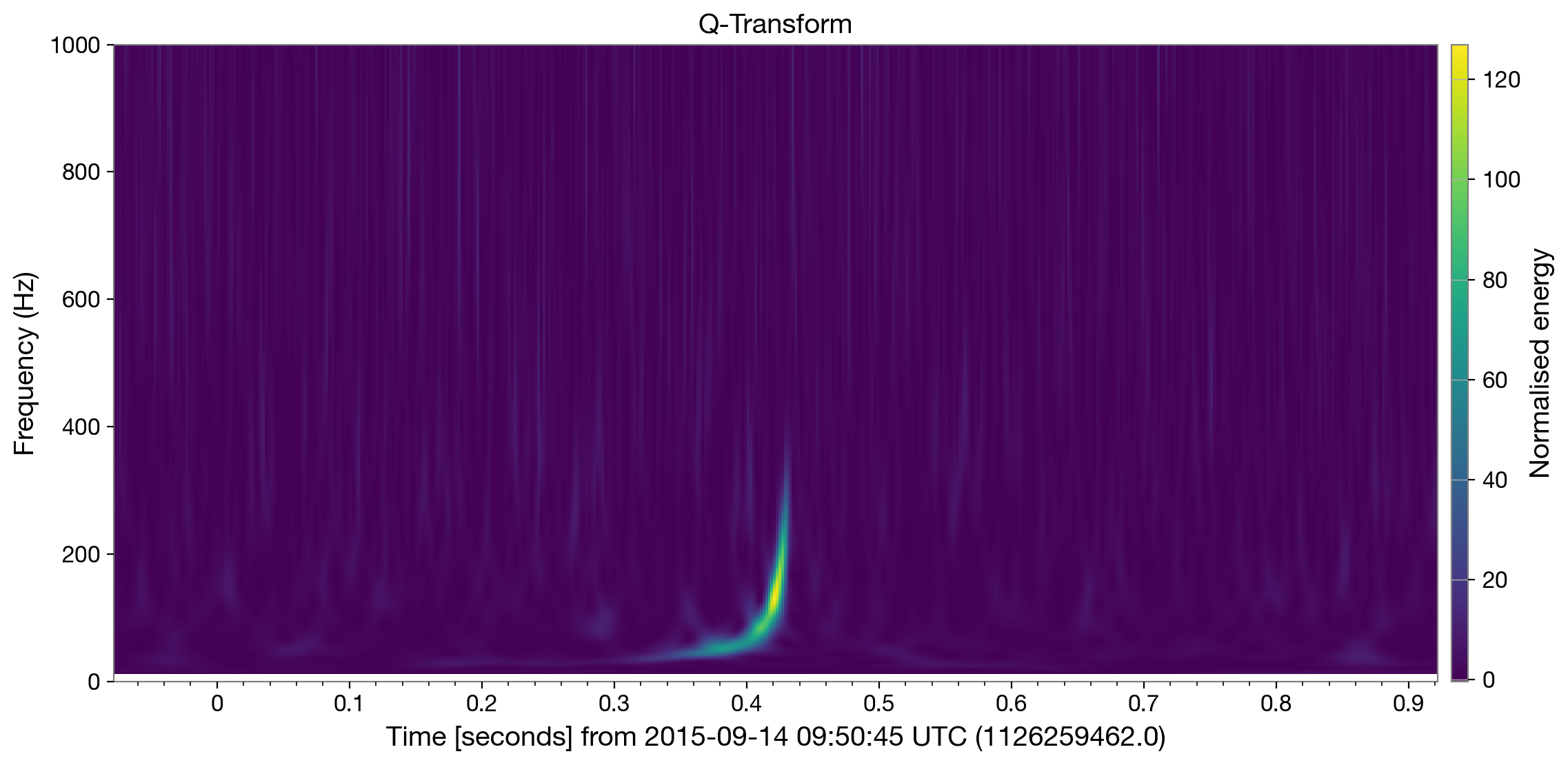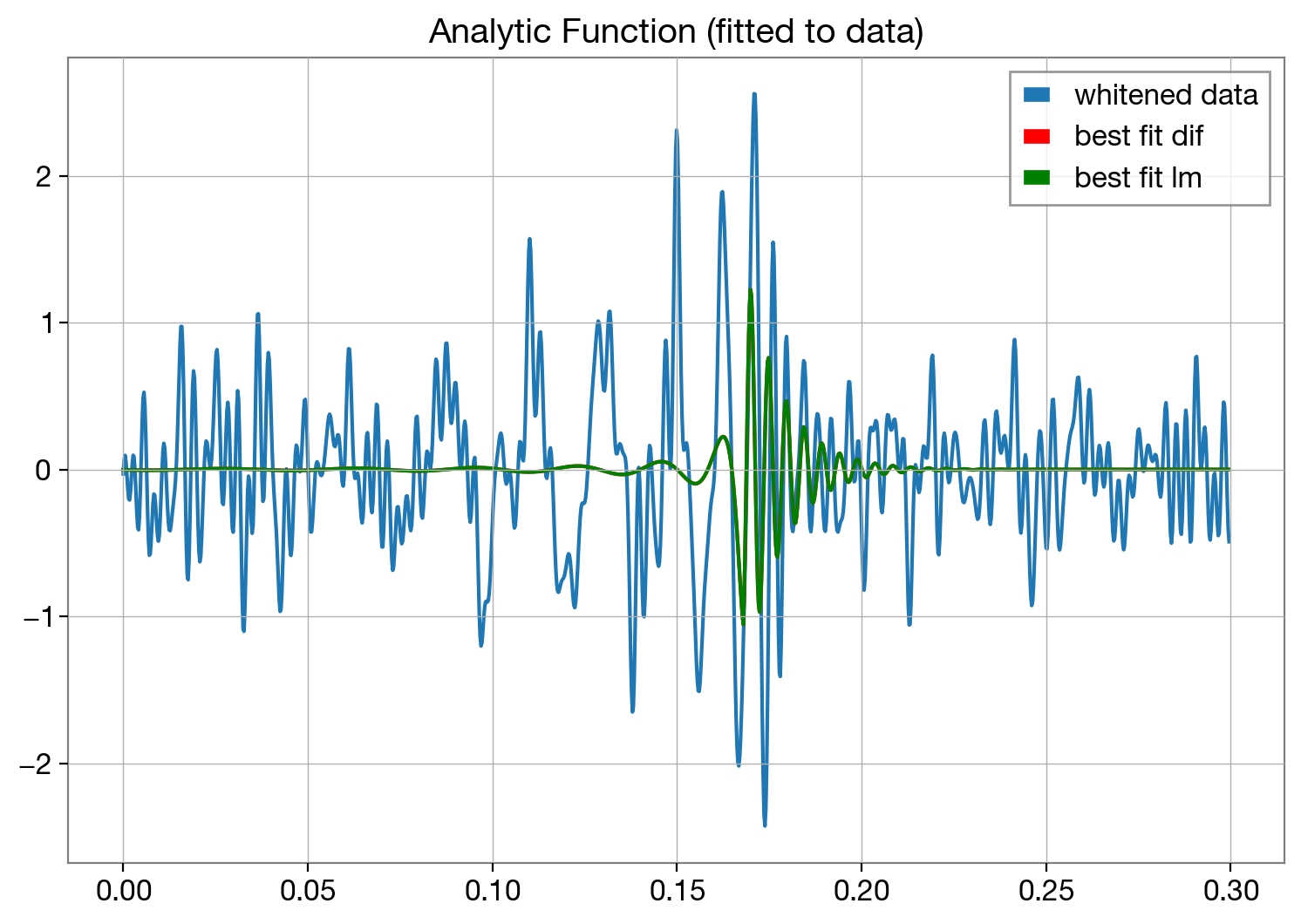Visual Results

Time-Series Strain Data
Raw LIGO detector data showing the gravitational wave signal at ~16 seconds

Q-Transform Analysis
Time-frequency representation showing the chirp signal evolution
_time.png)
Whitened Strain Data
Whitened strain data showing improved signal-to-noise ratio after processing

Chi-Square Fitting Results
Analytical function fitted to data with statistical validation (χ² ≈ 0.78)